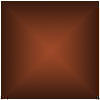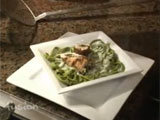EPISODE #6 -
SATURDAY MAY 9, 2009
Spring is the
traditional time for getting your house organized, and if you're
like us, you never quite get there. Help is on the way,
though! We visited The Container Store in Bridgeport
Village to see what a truly organized closet looks like.
And, before you start tackling your own projects this weekend,
we'll show you how to save money on your lighting, get your home
ready for sale and make some fresh--and healthy--pasta.
With all this great advice, you may just want to enjoy the nice
weather this weekend, and save the organizing for when the rains
return!
Don't forget that as
of this week, we have moved to our new
time on KOIN-6 in Portland, 8:00am. So start off
your Saturday mornings with Fusion, and then turn to
KPTV-12 at 8:30am for our sister show,
Garden Time.
Thanks for watching!
Staging a Home With the housing market in a downturn,
selling your home can be more difficult, and presenting your
house in its best light becomes critical. We met with
Bridget Kiene from
Transformations by Design (503-334-9522). Bridget is
an expert in the art and science of "home staging": preparing a
house for sale visually, so that every asset in the home appears
in its best light. Since 92 percent of home buyers use the
internet when looking for a home, those pictures will be the
first impression a prospective buyer gets. Bridget had four tips for preparing your
home for sale: Tip #1: Always Stage a Vacant Home.
Buyers need to be able to visualize themselves in your home, and
that means they want to feel like they could live there.
Staging shows them how furniture will fit in a room, and gives
them a "homey" feeling. Bridget helps with furniture plans
to make the best use of the furniture that is in a room. Tip #2: Create a Neutral Color
Pallette. Use earth-tone based colors that will appeal to
buyers, rather than bright or unusual colors that may make a
negative impression. Many paint manufacturers sell paint
samples (or have a quart made up) so you can test your color
before committing to it. Tip #3: Eliminate Clutter. A
prospective buyer will make an impression of your home in as
little as 15 seconds. So, Bridget says that cleaning up
clutter is critical. Since you're moving anyway, make your
house look organized by packing unnecessary items and excess
furniture before your prospective buyers come for a visit.
One other thing: clutter can be hiding assets, like granite
countertops. Tip #4: Modernize Your Decor.
Besides freshening up the paint, lighting can also make a big
impression. Lights that are outdated will make a room look
outdated. Another way to update your kitchen or bathroom
is to replace the knobs on your cabinets. This simple and
inexpensive fix will make your home feel fresh and new, and help
it to sell more quickly. Energy
Efficient Lighting We all know that the new compact
fluorescent lights are the best deal for everyone, right?
Not necessarily. We talked with Al Thomas from
Globe
Lighting (503-639-8816), an expert in lighting who said that
the right bulbs for you depends on what your needs are. Al
demonstrated four different types of bulbs: incandescent,
fluorescent, L.E.D. and halogen in a bulb-to-bulb comparison. Incandescent: The "old-fashioned" bulbs
use the most energy, but they are the most inexpensive to buy.
The "75 watt" bulb in Al's demonstration actually used about 55
watts, and put out around 120 footcandles of light. The
bulbs last approximately 2,000 hours in normal residential use. Compact Fluorescent: A big energy saver,
at 14 watts. However, the bulbs do take a while to "warm
up" to their highest light output, which Al says is lower than
what the package may claim. At their best, their output is
about 80 percent of the light of a comparable incandescent bulb.
Another point: While the manufacturer claims the bulbs last
8,000 hours, in common household use (that is, a lot of turning
the light off and on), they will last only 4,000 to 5,000 hours.
Also, they cannot be used in a dimmer, unless you buy a more
expensive version made specifically for dimmers. L.E.D.: The first thing you notice about
L.E.D. lights is that there is a lag from the time you flip the
switch to when the light actually comes on, of about three
seconds. However, the light output was immediately
brighter than the other two bulbs, at about 164 footcandles.
They also save energy at around 12 watts, and their life is not
shortened by turning the light on and off. Al says the
L.E.D. lights last 35,000 to 50,000 hours. The big
disadvantage comes in the price, at $65 to $75 per bulb. Halogen: At 50 watts, the halogen in our
demonstration put out 450 footcandles, significantly brighter
than any of the other bulbs, so it would take three of the
L.E.D.s to match the light output, making the energy used nearly
the same. Each bulb also emits a different "color
temperature," that is, the color of the light given off by the
bulb. Some are yellower, some bluer, and that will affect
how colors appear in the rooms of your house. When deciding which bulb to buy, Al
recommends "doing the math" to see which light works best for
your needs.
Easy Healthy Pasta Creating a delicious
healthy dinner for your family is not that hard. Chef Eric Nelson from
Vitality at
Wellspring (971-983-5280) made a whole wheat spinach pasta in just a
few minutes for us. This pasta is easy to make with just five
ingredients. We also found out how to make a quick spinach powder for
your pasta. You can just get some fresh spinach leaves and let them dry
under low heat in your oven and then run them through your coffee
grinder or a food processor. To see the whole recipe
click here.
Serving Your Healthy Pasta Now that you've made your healthy pasta,
it's time to eat it!
Chef Eric Nelson from
Vitality at
Wellspring (971-983-5280) shows us how to
serve your healthy pasta, with a fat-free
Alfredo sauce, along with a fat-free feta and spinach-stuffed
chicken breast. Because this is fresh pasta, it takes only
a few minutes to cook in boiling water, so you'll be ready to
eat in no time! Garlic Gadgets Stop the (garlic) presses! Laura at
Sur La Table
(503-968-8015) showed us some of her favorite garlic gadgets,
which make preparing your garlic as easy as 1-2-3. Besides
the garlic pressers, she also showed us a neat garlic roller,
which takes the peel off your garlic with just a couple of rolls
of a tube. To learn more about these useful tools, stop by
the closest Sur La Table.
Closet Organizing Are you getting the most use of out
your closet space? Dan Lerma of
The Container
Store (503-620-5700) in Bridgeport Village showed us how to get the
most out of your closets, no matter what size they are. The first
step is to separate your items into two piles: "donate" and "keep."
By getting rid of clothes you seldom use, it will create more space for
the items you use regularly. Dan told us that closet space
falls into six different categories: Long-hang, short-hang,
shelf space, shoe space, drawer space, and accessories. Long Hang: Dresses, long
coats, pants hanging from the waist or cuffs. Short Hang: Blouses, shirts,
pants folded over a hanger. This is what most people will
have, and you can do one or two levels of short-hang space. Shelf Space: Often up above
the other areas, this is a great place to store seasonal
clothes, tax records or things you don't need access to on a
regular basis. Shoe Storage: Dan
demonstrated a rack that holds nine pairs of shoes and glides
out for easy access. If you don't want your shoes out, you
can store them on shelves or in clear boxes, which make it easy
to find the shoes you want. Drawer Space: Sweaters,
t-shirts, socks, undergarments. Anything that has a
tendency to fall over on a shelf or take up room in a dresser
can be neatly contained in a drawer in your closet. Accessory Space: Purses, hats
and jewelry. Boxes on a shelf work great for this.
Also, there is a "jewelry box" that holds your small accessories
and organizes them and makes them easy to access. The system demonstrated by
Dan is interchangeable, and allows you to tailor your closet to
fit your needs. And, while there is no formula for how
much of each type of space you should have (it all depends on
the makeup of your wardrobe), one thing that will increase your
closet space is to use the same type of hanger for all your
clothes.
Kitchen Trends Stoves aren't the only things that are hot
in the kitchen these days! Diane Martin, a designer with
Ready
for Company (503-974-9694) talked about this year's trends
in kitchen design. While stainless steel is still popular,
white appliances and cabinets or very dark (espresso colored)
cabinets are becoming more popular, as well as painted cabinets
or a combination of painted and stained cabinets. Another
trend is to make the "island" less built-in and more like
furniture. Also in style: granite counter tops. One
way to save money on granite is to use granite tile, which,
thanks to new methods, has very thin grout lines and is
comparable to a granite slab, but is much less expensive.
This can also make granite a more economical choice than some
higher-end porcelain tile. A nicer touch to the old
six-inch backsplash is to use a tile backsplash, which goes up
the wall to the cabinets and can use a standard tile with an
accent. Pendant lights over your islands are also very
trendy. The bottom line, though, is to "follow your heart"
and make your kitchen suit your own tastes.
![]()
![]()
![]()



Website design and content ©2009 Gustin Creative Group. Please
send website inquiries to
gustingroup@comcast.net.
This page last modified
February 12, 2011.











